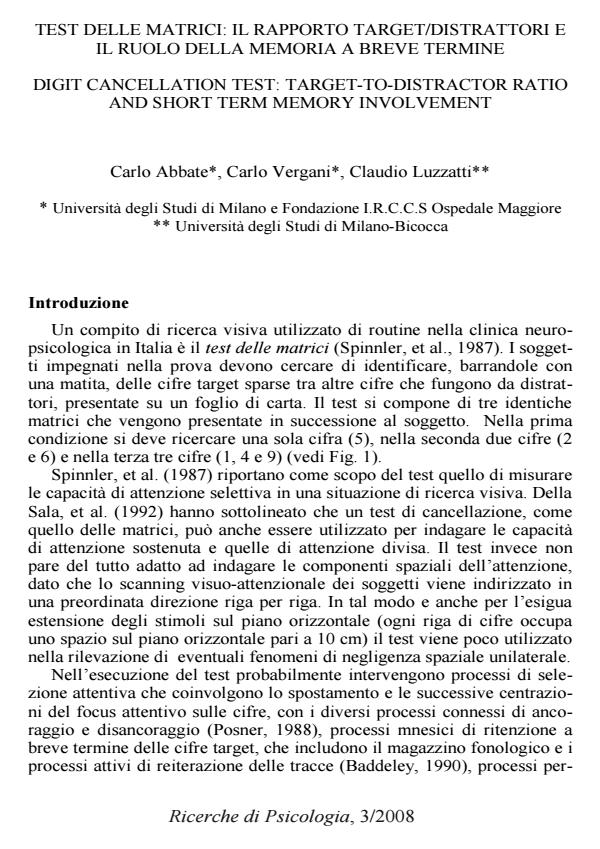Test delle matrici: il rapporto target/distrattori e il ruolo della memoria a breve termine
Titolo Rivista RICERCHE DI PSICOLOGIA
Autori/Curatori Claudio Luzzati, Carlo Abbate, Carlo Vergani
Anno di pubblicazione 2009 Fascicolo 2008/3 Lingua Italiano
Numero pagine 18 P. 29-46 Dimensione file 674 KB
DOI 10.3280/RIP2008-003002
Il DOI è il codice a barre della proprietà intellettuale: per saperne di più
clicca qui
Qui sotto puoi vedere in anteprima la prima pagina di questo articolo.
Se questo articolo ti interessa, lo puoi acquistare (e scaricare in formato pdf) seguendo le facili indicazioni per acquistare il download credit. Acquista Download Credits per scaricare questo Articolo in formato PDF

FrancoAngeli è membro della Publishers International Linking Association, Inc (PILA)associazione indipendente e non profit per facilitare (attraverso i servizi tecnologici implementati da CrossRef.org) l’accesso degli studiosi ai contenuti digitali nelle pubblicazioni professionali e scientifiche
Digit cancellation test: target-to-distractor ratio and short term memory involvement - We studied the effect of the target-to-distractor ratio (T/D) and short term memory on a matrix test performance. Higher performance on a visual search test with rising T/D ratio was found. An overall performance score improvement from the first to the third matrix is expected, because of the T/D ratio increase. In a previous study we found a significant difference on accuracy scores between the first and the following matrixes. In this article we demonstrate that an involvement of the short term memory processes could account for this result. Two hundred and twenty seven subjects from the Geriatric Unit of Ospedale Policlinico of Milan were considered. The subjects were 159 female and 68 male, aged 58 to 94 years with 3 to 18 years of education. Patients suffering from acute or chronic neurological diseases, sensorial impairment and alcoholism were excluded. We examined retrospectively the performance obtained by the subjects on a matrix test and a bisyllabic words span test. Correlation between accuracy scores obtained for the different matrixes of the attention test and the span score was then calculated. We found: 1) a significant difference on overall performance score between the three matrixes of the attention test: scores increase with the rise of T/D ratio; 2) a significant correlation between the accuracy score of the second and third matrix and the score of the span test; 3) no correlation between accuracy scores on the first matrix and the short-term memory score. In conclusion our data confirm the positive effect of a larger target-to-distractor ratio on the visual search performance in elderly people. The hypothesis that short-term memory is involved in the execution of the second and third matrix is preliminarly confirmed. The results are discussed in terms of the signal detection theory.;
Claudio Luzzati, Carlo Abbate, Carlo Vergani, Test delle matrici: il rapporto target/distrattori e il ruolo della memoria a breve termine in "RICERCHE DI PSICOLOGIA " 3/2008, pp 29-46, DOI: 10.3280/RIP2008-003002